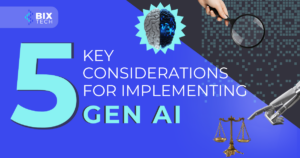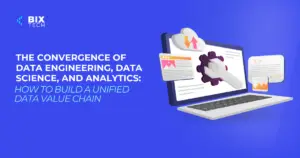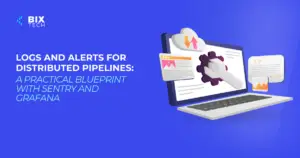Building a Future-Ready Tech Infrastructure: Strategies for Adapting to Emerging Trends

Sales Development Representative and excited about connecting people
In today’s rapidly evolving digital landscape, future-proofing your technology infrastructure is essential for any business aiming to thrive. The right tech foundation not only allows your solutions to adapt to shifting business needs, but also secures your organization’s long-term success and resilience. Let’s dive deep into why making smart infrastructure choices now will save you from major headaches down the road—and how you can strategically position your organization for whatever comes next.
Why Future-Proofing Your Tech Stack Matters
Many organizations learn the importance of future-proofing the hard way. Imagine launching a minimum viable product (MVP) that quickly becomes a market sensation. As your user base grows, cracks begin to show: performance bottlenecks, ballooning cloud expenses, and a lack of scalability. If your team relied on outdated or niche technologies for speed or comfort, you may soon realize that fixing these issues is costly and talent is scarce. Security vulnerabilities creep in, and the cost to patch, upgrade, or migrate can skyrocket.
This scenario is more common than you might think. Even seasoned engineers can fall into the trap of prioritizing quick wins over sustainable architecture. The lesson here? Building for the future is always worth the upfront investment.
Key Principles for Future-Proofing Your Infrastructure
Let’s explore actionable strategies that will help ensure your tech stack remains robust, scalable, and secure as your business evolves.
1. Align Infrastructure with Business Goals
Every tech decision should support both your immediate objectives and your long-term vision. Startups may prioritize agility and low costs, while established enterprises focus on reliability, compliance, and scalability. No matter your size, it’s crucial to consider ongoing expenses such as maintenance, upgrades, and potential hidden costs like forced migrations or specialized developer fees. A forward-thinking approach helps prevent expensive surprises and supports sustainable growth.
2. Choose Technologies with Vibrant Developer Communities
Select platforms and frameworks with active user bases and extensive support. A healthy developer ecosystem ensures easier talent acquisition, abundant learning resources, and a quicker response to emerging issues. Encourage your team to upskill and remain open to adopting new technologies—your team’s adaptability is one of your biggest assets for staying ahead of the curve.
For a deeper look at how AI and data-driven solutions are revolutionizing the business landscape, check out this guide on the business applications of language models.
3. Prioritize Scalability and Security from Day One
Scalable infrastructure is the backbone of modern digital products. Cloud-native solutions, containerization tools like Docker, and orchestration platforms such as Kubernetes can help your applications adapt to fluctuating demand. However, don’t overlook the cost implications of cloud services—engage FinOps experts or use cost management tools to keep expenses in check.
Security must be an ongoing priority. With rising cyber threats and ever-stricter compliance requirements, embedding robust security practices into your development lifecycle is non-negotiable, especially if your systems handle sensitive or financial data.
4. Focus on Maintainability and Upgrade Paths
As your project grows, so does its complexity. Accumulated technical debt and reliance on legacy systems can make ongoing maintenance overwhelming and expensive. Opt for modern, well-supported technologies and enforce best practices to keep maintenance manageable. Even with the best planning, future migrations or upgrades may become necessary. Designing your architecture with modularity and flexibility in mind ensures that transitions are smooth and downtime is minimized.
5. Hardware and Cloud Infrastructure: Planning for What’s Next
The hardware landscape has dramatically changed with the rise of virtualization and cloud computing. Virtual machines introduced resource abstraction, while cloud platforms delivered unprecedented flexibility and scalability. Most organizations today rely on cloud-native development and increasingly leverage containers and microservices for agility.
Hybrid and multi-cloud strategies are gaining traction as businesses seek to avoid vendor lock-in, enhance data sovereignty, and optimize costs and performance. By combining private and public cloud resources, companies in regulated industries can meet compliance needs while still benefiting from the scalability of public clouds. Multi-cloud approaches enable organizations to cherry-pick the best offerings from multiple providers—such as optimal storage pricing from one and superior latency from another.
For practical strategies on cloud migration, see our in-depth guide on navigating cloud transformation.
Emerging Technologies Shaping Tomorrow’s Infrastructure
Artificial Intelligence and Machine Learning
AI and machine learning are no longer futuristic concepts—they’re now integral to how businesses operate and scale. Cloud providers are embedding intelligent automation into their platforms, streamlining resource management, and enhancing security through predictive analytics. By leveraging AI, organizations can:
- Automate resource scaling and routine administrative tasks
- Reduce operational costs through process optimization
- Detect and respond to security threats in real time
- Unlock powerful data analytics for strategic decision-making
The Rise of Hybrid, Multicloud, and Edge Computing
Hybrid and multicloud adoption is accelerating. According to Gartner, up to 90% of organizations are expected to embrace hybrid cloud environments by 2027. This approach not only mitigates the risk of vendor lock-in but also empowers organizations to select the right mix of features, pricing, and performance.
Meanwhile, edge computing is emerging as a solution to the growing demand for real-time processing. By bringing computation and storage closer to the source of data—such as IoT devices and remote sensors—businesses can minimize latency and deliver faster, more reliable services to customers across diverse locations.
Moving Forward: Building Resilience into Your Tech Strategy
Future-proofing your tech infrastructure is an ongoing process, not a one-time decision. By aligning your technology choices with business goals, prioritizing scalability and security, investing in talent, and staying attuned to emerging trends, your organization can confidently embrace change.
Remember, the decisions you make today shape tomorrow’s opportunities. Taking a proactive, strategic approach to your tech stack will help your business adapt, grow, and compete—no matter what the future brings.
Looking to unlock even more value from your infrastructure? Explore how data science is transforming business operations and discover actionable steps to keep your organization ahead of the curve.









